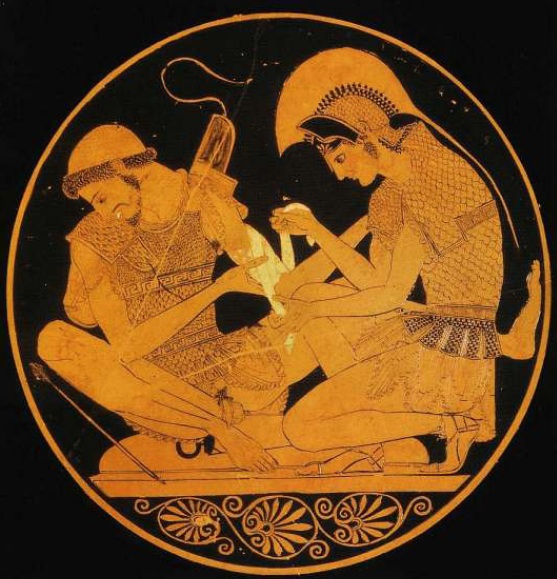Note: This entry was originally posted on a blog I created for my History of Medicine class final project during December 2012.
Due to its relatively late emergence as a defined field in the United States, emergency medicine is often described as "new". This foundling status is sometimes used as a reason why professionals in that field perceive discriminatory pay and status compared to other medical fields that have apparently existed for much longer. However, truth be told, emergency medicine reaches much back farther than the 1960's paper credited with establishing EMS in the United States. This history is so lengthy, in fact, that it would be impossible to reasonably cover it in one blog post.
After all, as long as there have been wars, there has been a need for emergency medicine in one form or another; what's more, one could divide emergency medicine into the two components of transportation and treatment. Therefore, one could reasonably classify all wound treatments as EMS; then EMS might be considered the oldest of all the medical specialties, laying claim to figures like Galen. However, modern EMS is connotatively inseparable from its transportation aspect, so I'm going to mainly consider this. To that end, I'll go over a few interesting cases that should prove that even with strict application of this designation, EMS has roots far back in time. (This two-edged definition is perhaps what makes the history of EMS so difficult to trace. Should both emergency treatment and transportation be required of an event in order to link it to the background of EMS, or is it okay to focus on only one of those factors? The first approach is too narrow, yet the latter ends up being too comprehensive. Where do we draw the line?)
Greek & Roman. As early as Roman times, chariots and carts were used to remove injured soldiers from the battlefield. Nobody knows if these carts were specially equipped or if there were individuals assigned to provide rudimentary treatment. Initially, these soldiers were probably simply deposited out of harm's way; by 100 AD, they would be taken to valentudinaria, or Roman military field hospitals. Sometimes, however, before or instead of transporting a fallen soldier, care was simply administered on site, occasionally even while the battle raged on. One ancient Greek vase depicts the story of Achilles bandaging the arm of his wounded cousin (Robbins).

